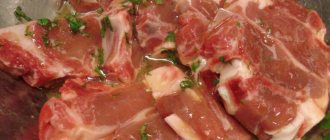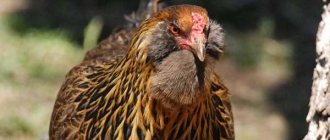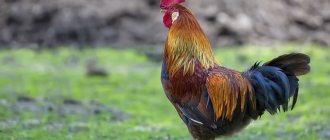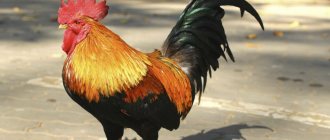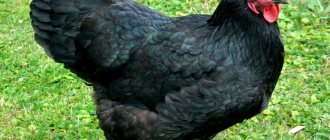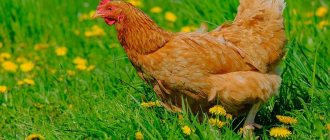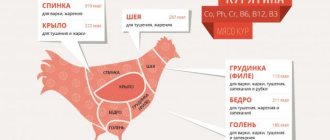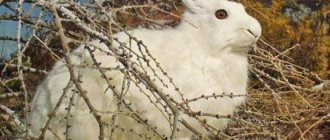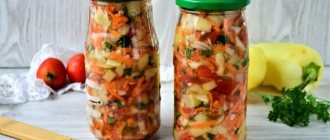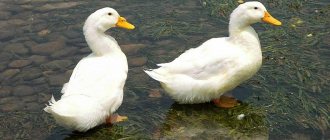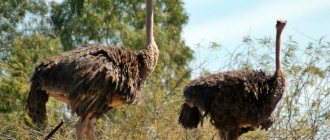The rooster is one of the most popular animals raised at home. A novice farmer will find useful information about his habitat, feeding habits, and reproduction. Few people know that there are a huge number of species of roosters, and some are subject to heated discussions. Well, scientists don’t know whether to consider this particular bird a rooster or class it with other species. The article will consider which bird can be considered a rooster, the lifestyle of this animal: habits, nutrition.
Cutlets
Those who prefer minced meat dishes should pay attention to the recipe below. Cutlets made using it turn out very juicy and tasty. In addition, they harmoniously combine with many side dishes, which means they will help diversify your daily diet. To fry them for lunch or dinner, you will need:
- 400 g rooster meat.
- 2 slices of loaf.
- 1 potato.
- 1 onion.
- 2 egg yolks.
- Salt, allspice, water and vegetable oil.
You need to start preparing this dish from a domestic rooster by processing the poultry meat. It is thoroughly washed and ground into minced meat along with a loaf soaked in water and peeled vegetables. All this is peppered, salted, supplemented with egg yolks and kneaded thoroughly. Neat cutlets are formed from the resulting mass, fried in heated vegetable oil, poured with a small amount of water and simmered under the lid for a quarter of an hour.
Features of character and lifestyle
Photo: Golden Rooster
Roosters are flocking birds. Like many galliformes, there is only one adult rooster in a flock, which has the right to mate with all the females, as well as several growing roosters. Adult roosters are expelled from the flock by the leader. If the owners of the flock do not seed them independently, then the weaker individuals will be constantly subject to pressure from the leader.
The rooster controls a certain number of hens. He looks for food for them, shares random prey, announces their daily routine - the chickens go together to sleep or to water. Roosters are not known for their docile nature - they are aggressive and lively birds, which is why they began to be used for bird fights.
Interesting fact: Fighting roosters always fight to the death.
Roosters are either indifferent or aggressive towards humans. These birds rarely show affection or interest in people. Most often, they seek to demonstrate their dominance by driving the stranger out of their territory.
Roosters and their flock of hens are territorial birds. They are not adapted to migration, so they prefer to always stay on one piece of land as long as it is able to feed them. Roosters move after fresh food. They spend winters comfortably in warm chicken coops.
Roosters are extremely thermophilic. They freeze quickly in the cold because they do not have any protective mechanisms against getting cold, unlike other birds such as partridges, pigeons or crows.
Roosters are also prone to molting, which occurs in late autumn - early winter. Their top layer of hard feathers falls off, in their place new feathers will grow by the next summer season. Roosters sleep with their heads hidden under their wings and standing on one leg.
Stew
This product is canned heat-treated meat that is subject to long-term storage. It goes well with pasta, vegetables and other ingredients and serves as a universal basis for preparing hearty and tasty dishes. To make your own stew from domestic roosters, you will need:
- 600 g chicken fat.
- 5 kg of rooster meat.
- 6 bay leaves.
- 5 tsp. kitchen salt.
- 16 peas each of black and allspice.
First you need to deal with the fat. It is sent to any suitable pan and heated. As soon as everything is ready, pieces of the cut rooster are poured into a common container and simmered over low heat for four hours. Shortly before the process is completed, the contents of the pan are supplemented with salt, bay leaf, black and allspice. The finished stew is packaged in glass jars, closed and sterilized for about twenty minutes.
Huge record breaking chickens
Many chicken farm owners try to achieve certain goals when breeding laying hens and even compete with each other. Some poultry farmers go even further - they try to make history by raising the largest chicken. Among them are Jeremy Goldsmith and the Stone family from the UK, Ronald Alldridge from Australia.
Ten-kilogram Big Snow
A Whitesulli rooster named Big Snow, owned by Australian Ronald Alldridge, set a weight record in 1992. He gained more than 10 kg with a height of 43 cm. Having measured the chest circumference of the bird, the commission recorded the figure - 84 cm. The farmer loved his pet very much and was proud of him, but, unfortunately, he soon died.
Little John
A huge Brahma rooster, Little John, lives in England. At the age of one, his height reached 66 cm. The owner of the giant, farmer Jeremy Goldsmith, does not want to reveal the secret of what he feeds his feathered friend, but admits that a special diet contributes to accelerated growth.
Rooster Coburn
This rooster is also English and belongs to the Brahma chicken breed. The bird's owners, the Stone couple, describe him as the brave head of the family. According to them, Rooster is not even afraid of foxes, which often enter the farm. This is not surprising, the rooster is 91 cm tall and weighs 11 kg.
Aspic
This dish, which no feast is complete without, is a frozen clear broth with pieces of meat. To make jellied rooster yourself, you will need:
- 3 liters of clean water.
- 2 carrots.
- 3 onions.
- 6 cloves of garlic.
- 15 black peppercorns.
- 1 root celery.
- 1 rooster carcass weighing about 2 kg.
- 2 teaspoons salt.
- 2 tbsp. l. gelatin.
The washed poultry is cut into pieces, placed in a large pan, filled with water, put on the stove and cooked for about an hour and a half from the moment of boiling, not forgetting to remove the resulting foam. After the designated time has passed, peeled vegetables, roots and spices are added to it and cooking continues. After another hour and a half, the meat is removed from the pan, separated from the bones and placed in any suitable container. Add crushed garlic there and pour in the strained broth, in which the gelatin was previously dissolved. All this is cooled at room temperature, and then kept in the refrigerator for at least four hours.
Interesting Facts
- The enemies of roosters are any predators, such as foxes and wolves. Roosters live in a chicken coop with a dozen hens and chickens.
- At dawn, the rooster crows his famous “crow!” with all his might.
- In the folklore of different countries you can often find the image of a rooster. In Russian fairy tales, the rooster is a positive character, has a heroic character and comes to the aid of the weak. Children really love fairy tales about Petya the Cockerel.
- The rooster is also a symbol of cockiness. Some peoples still have cockfights. In England, until the end of the 18th century, a bloody sport called “cock throwing” was practiced. It consisted of the public throwing things at a rooster planted in a pot until the bird died.
- Among the Eastern Slavs, one of the most important functions of the rooster as a harbinger is sentry. Singing it means the beginning of a new hour, when dark demonic forces are at work.
- With its crow, the rooster disperses the evil spirits until the next night. The crowing of the third roosters - a sign of the even duration of midnight until dawn - indicates the completion of the action of evil spirits. When building a house, the Slavs sacrificed a black rooster.
- A rooster makes many different sounds. For example, when he calls hens to feed, the crowing will be repeated, but the morning crowing is performed once, but longer and at higher frequencies. The higher the pitch, volume and duration of the sound, the stronger the effect that the rooster has on hens and other roosters. The same rooster always crows in the same way. By the way, a rooster cannot crow if he cannot stretch his neck.
- Ayam Chemani is a breed of all-black chickens and roosters from Indonesia. They have a dominant gene that causes hyperpigmentation. Their bones and internal organs are also completely black, even the blood of these birds is much darker.
- A rooster named Mike (aka Miracle Mike) lost his head in 1945. But then he lived another 18 months because he still had the base of his brain and one ear. When the farmer noticed that the bird was not dead, he cared for it by feeding it milk and grain through a pipette. Mike gained fame when his owner began showing him all over America and his authenticity was documented. The rooster died only because the owner forgot food and a syringe for cleaning the esophagus at the site of one of the shows. Many tried to repeat this experience, but no other chicken lived for more than two days.
- British ornithologist Joe Edgar discovered the ability of domestic chickens to experience empathy (that is, to empathize with others). It is also known that chickens become sad if they are far from the group.
- Large and hardy roosters have the highest chances of procreation: females understand that they can provide them with a large amount of food. The size, shape and color of the scallop also matters.
- They are able to remember the traits of more than 100 chickens or people, so they remember those who treat them badly or well. They have acute (telescopic) vision, characteristic of birds of prey, and in the decision-making process they take into account their experience and their knowledge of the environment. These birds are also capable of arithmetic calculation and distinguish some geometric shapes.
- In Southeast Asia, Mexico, and the northern Philippines, many practicing Christians revere traditional spirits (anitos). Animist beliefs extend to both ordinary and fighting cocks: "a popular form of worship for the purpose of high fertility among almost all inhabitants of Southeast Asia", then, according to some people, in accordance with Judeo-Christian morality, it became a form of Baali.
We suggest you read: Is it possible to drink lingonberry leaves during pregnancy?
Sources
Now let's look at some interesting facts about roosters.
In Kenya and France, the rooster is considered the national bird. In many countries it serves as a symbol of courage and fearlessness.
At a time when the Slavs did not yet have clocks, they navigated in time thanks to the crowing of roosters. With the first screams the peasants woke up, with the second they went to milk the cows, and with the third they went to the field. In addition, it was believed that the first rooster crow announced the onset of morning and dispersed all evil spirits in the area.
In 1845, newspaper articles appeared about a rooster that lived without its head for about 18 months. They tried to kill the bird, but it survived. The farmer was surprised by this, and he began to feed the male with grains and milk using a pipette. Read more in the article “The Life of a Headless Chicken: The Story of Headless Mike.”
Vegetable soup
This tasty and easily digestible first course will certainly be appreciated by those who have not yet decided what to cook from a domestic rooster for lunch. To cook it, you will need:
- 200 g of young green peas.
- 400 g rooster.
- 7 potatoes.
- 1 carrot.
- 4 peas of allspice.
- 2 bay leaves.
- Salt, water and herbs.
First you need to deal with the rooster. It is thoroughly washed, placed in a saucepan, filled with clean water and boiled, not forgetting to season with bay leaves and peppercorns. When the meat is almost ready, pour potato slices and carrot pieces into a common container. All this is boiled for twenty minutes, and then supplemented with salt, chopped herbs and young peas. A little less than a quarter of an hour later, the heat under the pan is turned off, and its contents are poured into plates.
Appearance and features
Photo: What a rooster looks like
Due to the variety of breeds, roosters have variable appearance. But in general their constitution remains unchanged. This bird has long strong legs, with poorly developed wings, on which it is either incapable of flight or can fly for a short time. Roosters have a short but high neck, a small head and a distinct comb and “wattle” - leathery projections at the bottom of the beak.
Many roosters have a noticeable tail. The feathers on it are elongated and have a softer structure. Thanks to their tails, roosters can attract females, like peacocks. Most breeds of roosters have spurs - fingers set slightly higher than usual with sharp, strong claws. Roosters are larger and stronger than hens. They are also distinguished by the fact that they can sing loudly - crow. This is possible due to the special structure of the larynx of these birds.
Egg-breed roosters are distinguished by a large crest on their head, which is often colored a bright scarlet hue. This ridge is so large that it can fall to one side. Such roosters weigh up to three kg, and meat-and-egg roosters can reach four kg.
Interesting fact: Regardless of the size and feeding of the rooster, its meat is a dietary product.
Roosters of exclusively meat breeds can weigh up to five kg. These are breeding birds that often have difficulty walking on their feet because they cannot support their body weight. Meat roosters grow quickly, unlike egg breeds. There are also decorative roosters raised exclusively for exhibitions, competitions and amateur keeping.
For example:
- Brahma roosters are very large laying hens that are distinguished by thick feathering on their legs. This plumage is similar to "pants";
- curly roosters. The name speaks for itself - these roosters are distinguished by their curled hair, which forms real ringlets and curls;
- Millefleur roosters. These are real beauties who can boast of colorful plumage. Their black tails, dotted with white symmetrical specks, are also luxurious;
- paduan - roosters with a huge feather comb;
- Oryol dwarf roosters are very similar in appearance to female partridges.
Vermicelli soup
Homemade rooster produces a rich, aromatic broth that serves as an excellent basis for preparing a variety of first courses. To feed your loved ones delicious noodle soup, you will need:
- 2.5 liters of clean water.
- 3 onions.
- 1 stalk celery.
- 1 rooster carcass weighing about 1.5 kg.
- 250 g vermicelli.
- Salt, rosemary and bay leaf.
The cut and washed rooster is placed in a pan, filled with the required amount of water and sent to the fire. As soon as the liquid boils, add salt, coarsely chopped onion, rosemary, celery and bay leaf. After about an hour, the bird is separated from the bones and returned to the strained broth. Bring all this back to a boil, add vermicelli and cook for another ten minutes.
The tallest chicken breeds
When considering large breeds of laying hens, it is worth mentioning the fighting varieties, as they are distinguished by their high growth. Today they are bred exclusively as ornamental birds or to improve the meat characteristics of poultry, but previously the birds were used in cockfighting.
General characteristics of fighting chickens:
- vertical position of the body;
- developed shoulder girdle;
- loose plumage;
- small comb;
- strong, strong beak;
- wide-set, muscular legs;
- predatory look.
Attention! Fighting chickens are characterized by aggression. They can even attack their owner
Elephant chickens ga dong tao
Giant size Vietnamese chicken. In her homeland she is considered a national treasure. The rooster's height is 75–90 cm, weight is 6–7 kg. The peculiarity of the breed is its thick paws, covered with growths, reminiscent of the legs of an elephant. This part of the body of ga dong tao is disgusting to some, and in its homeland the limbs of the bird are considered a delicacy.
Attention! The girth of a rooster ga dong tao's leg is equal to the thickness of a child's wrist
Elephant chicken ga dong tao
Elephant chickens cannot be confused with others - they have an original appearance:
- stocky figure, muscular body with small wings;
- there is a rose-shaped crest on the small head;
- the bird has a predatory, aggressive look, red eyes;
- limbs of medium length, thick metatarsals, bare with huge toes;
- sickle-shaped tail;
- the plumage is loose;
- types of colors - black, wheaten, fawn, black and red.
Reference. The cost of a purebred Ga Dong Tao rooster reaches $1,500. This is one of the reasons why representatives of the Vietnamese breed are not popular in Russia.
Malayan fighting
Another tall chicken of the Malayan fighting breed is worthy of attention. The bird's height reaches 90 cm. Its distinctive feature is a line of three bends. Representatives of this line have an arched neck, back and tail. The body position is vertical. The shoulders and chest are well defined on the body.
The head is small with clearly defined brow ridges and a compact pisiform crest. The legs are long, the shins are well muscled, the metatarsals are strong, bare, and yellow in color. The most common color is black, but white, wheaten, porcelain and others are also found.
Malayan fighting chicken breed
The Malay laying hen produces 100 eggs weighing 57 g over the course of a year. The shell is strong and light beige. The weight of the head of the family is close to 5 kg. Females are slightly smaller - 3.5–4 kg.
Cabbage soup
This rich filling soup will definitely appeal to anyone who considers himself a fan of Russian national cuisine. To cook aromatic cabbage soup from domestic rooster for dinner, you will need:
- 300 g white cabbage.
- 400 g rooster meat.
- 1 carrot.
- 1 sweet pepper.
- 1 red tomato.
- 2 onions.
- 4 potatoes.
- Salt, water, oil, spices and herbs.
You need to start the process by preparing the broth. To do this, place peeled onions and pieces of washed meat in a saucepan with water. All this is put on fire and boiled, periodically removing the resulting scale. After some time, the onions are caught from the broth, and potato slices and shredded cabbage are sent in their place. At the next stage, future cabbage soup is seasoned with fried carrots, peppers and tomatoes, added salt, flavored with spices and brought to full readiness.
Origin of the species and description
Photo: Rooster
All male Galliformes are called roosters. For example, a male partridge can be called a rooster, just like a male domestic chicken. In the everyday view, a rooster is precisely a domestic bird, which is distinguished by a comb, spurs and, as a rule, motley plumage.
Video: Rooster
Roosters, along with domestic cocks, are divided into the following types:
- meat - produced for meat production, characterized by large size and high body weight;
- egg - these include chickens, but there are also special roosters that fertilize a flock of hens;
- fighting. Only roosters are used for this variety, since male domestic chickens are more aggressive than females. Fighting cocks are large in size but light in body weight. They are maneuverable, have long claws and spurs;
- decorative - such roosters are bred as pets, and they are distinguished by some special characteristics - dwarfism, gigantism, special plumage, and so on;
- vocal - roosters bred specifically for singing.
A rooster is an artificially bred bird obtained by crossing wild chickens, partridges and other birds. Roosters were bred as birds that are not afraid of people and quickly gain weight. Also, since ancient times, roosters have been valued as songbirds that herald the arrival of the morning sun with their crowing.
Baked bird
This fragrant and beautiful dish of homemade rooster will fit perfectly into the holiday menu. It takes a little longer to prepare than the one for which a store-bought broiler is used, but the result will definitely justify the time spent. To make it in your own kitchen, you will need:
- 100 g sour cream.
- 1 rooster weighing about 2 kg.
- 5 apples.
- 5 cloves of garlic.
- 5 tbsp. l. soy sauce.
- Salt, curry and Provençal herbs.
The plucked and gutted rooster is thoroughly washed, dried and rubbed with a mixture of sour cream, spices, garlic and soy sauce. After a couple of hours, the marinated carcass is stuffed with apple quarters, packed in a special sleeve and sent to the oven. Bake it at 200 °C for 120 minutes. Shortly before the process is completed, the sleeve is carefully cut so that the rooster has time to brown.
How to determine the sex of a chick by looking at its egg before it is born
You can determine whether it is a cockerel or a hen long before the chick is born. To do this, you need to carefully examine the egg, which will later be used for the incubator. The following features must be taken into account:
- The pointed end of the egg, which is slightly elongated, indicates that there is a male embryo inside.
- The round shape of the egg indicates a hen.
- If the shell of an egg is loose, with small tubercles, most often a cockerel emerges from it. Conversely, the chicken hatches if the shell is smooth.
- If the air capsule is located towards the end of the egg, this indicates a male. In eggs from which chickens emerge, the air chamber is most often located closer to the center. Special equipment is used to determine this difference. Without it, this can be done by examining the egg under a lamp in a dark room.
On a note! This verification method cannot provide 100% information, so it is sometimes very difficult to distinguish a hen from a rooster in the egg state.
Poultry stewed in tomato sauce
This appetizing second course of domestic rooster will definitely be appreciated by lovers of tasty and healthy food. It is suitable for both adults and children’s diets, which means it can be safely served for a family dinner. To prepare it, you will need:
- 500 ml of clean water.
- 1 rooster.
- 1 carrot.
- 1 onion.
- 3 tbsp. l. flour and tomato paste.
- Salt, oil and spices.
The plucked and gutted carcass is thoroughly washed under the tap, dried, cut into portions and fried in a greased frying pan, not forgetting to add salt and seasoning. The browned poultry is transferred to a cauldron and complemented with vegetables, sautéed with the addition of tomato paste and flour. All this is poured with water and simmered under the lid until the meat is soft. This dish is served hot with any porridge, pasta or mashed potatoes.
Poultry stewed in wine
This festive dish of homemade rooster will be a worthy decoration for any feast. It harmoniously combines several of any ingredients at once, which means your family and guests will definitely like it. To prepare it yourself, you will need:
- 100 g unsalted lard.
- 150 g champignons.
- 100 ml cognac.
- 1 rooster.
- 1 bottle of red wine.
- 1 clove of garlic.
- 8 onions.
- 1 tbsp. l. flour.
- Salt, thyme, bay leaf, vegetable oil and butter.
First you should deal with the rooster. It is plucked, gutted, thoroughly washed in running water, cut into portions and fried in a mixture of vegetable and butter. The browned pieces are transferred to a cauldron, at the bottom of which there are already onions cut into half rings, slices of mushrooms and slices of lard. All this is salted, seasoned with spices, flavored with bay leaf and crushed garlic, and then sprinkled with cognac, poured with wine and simmered under the lid within an hour from the moment of boiling.
Viennese rooster
This dish will not escape the attention of fans of Austrian cuisine. To prepare it yourself at home, you will need:
- 1 rooster.
- 1 egg.
- Salt, flour, breadcrumbs and vegetable oil.
The pre-prepared and washed poultry is cut into four parts. Each of them is sprinkled with salt and rolled in flour, beaten egg and breadcrumbs, and then browned in boiling vegetable oil. Serve Viennese rooster with any vegetable salad.
Fertilization of eggs
The mature egg enters the oviduct, in the upper part of which the fertilization procedure takes place directly through the acrosome reaction: the upper part of the sperm penetrates through a special tubercle on the female gamete. His tail separates at the same time. During fertilization, several sperm penetrate the chicken egg at once, but only one merges with it.
Next, the egg is gradually coated with protein produced by special glands located in the walls of the oviduct. When moving forward, the so-called subshell membrane is formed on the future egg, and behind it is a dense shell, which is a compound of calcium carbonate. This substance is already produced in the lower part of the oviduct.
